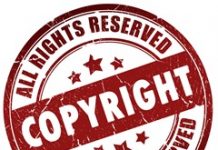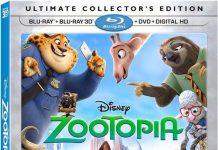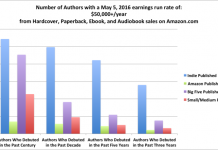 Chris Wilkes, VP, Digital Editions and Apps, Hearst Digital; Rex Hammock, CEO, Hammock, Inc.; Gregg Hano, Group Publisher, Bonnier Technology Group; Terrence O’Hanlon, Publisher, Uptime Magazine, Realityweb.com; Ron Matejko, Owner, MVP Media; Marcis Grimm, Marketing Director, Nxtbook Media; Joe McCambley, The Wonderfactory; Khoi Vin; Dianne Kennedy, Vice President of Emerging Technologies, IDEAlliance
Chris Wilkes, VP, Digital Editions and Apps, Hearst Digital; Rex Hammock, CEO, Hammock, Inc.; Gregg Hano, Group Publisher, Bonnier Technology Group; Terrence O’Hanlon, Publisher, Uptime Magazine, Realityweb.com; Ron Matejko, Owner, MVP Media; Marcis Grimm, Marketing Director, Nxtbook Media; Joe McCambley, The Wonderfactory; Khoi Vin; Dianne Kennedy, Vice President of Emerging Technologies, IDEAlliance
Wilkes: runs the Hearst apps labs. They do a lot of R&D and looking at a variety of approaches and business models. What’s really important, based on consumer research based on over 100K responses from consumers, is that consumers don’t distinguish anything that the industry is talking about. What they look at is brands and the overall experience. Doing market for these apps is only in the primitive stages yet, especially since there are so many closed systems. Without this market making ability it doesn’t matter how good the apps are because sales will be so low. Zinio and B&N are showing some exciting numbers and these are mainly replicant apps. No effective way to get in front of consumers with covers, cover lines, etc. which is what sells magazines. Redesigning the magazine is the first thing that has to be done with a magazine to make it digital because screens are smaller than the typical magazine. Most important thing, right now, is to give consumers a way to touch and feel the content. Second most important thing is giving people the ability to interact with the content. Video is fairly far down the list of important things to do. Live data seems to be important – feeds to keep articles current with statistics, for example. Need better tools for publishers to make this stuff. Tools are rapidly evolving, luckily. The Mag+ platform is excellent. Probably have confused consumers with all the new navigation models. Need to simplify navigation generally and make it intuitive. Taken a lot of effort in trying to reduce the size of their magazines.
Hammock: moderator. Magazine apps not magazines because have never had to sign a 3,000 word license agreement to read one – like he did with the Wired app. And have never had to get an explanation of how to use a magazine – like he did with the Project magazine. Very few publishing oriented in the top 100 paid apps. Magazines can be a business model, but many magazines are not – they support a business model, for example, a college alumni magazine, b to b have less than 50% advertising, benefit of ownership, premium. In Europe magazines and catalogs are merging. Magazine apps that have the same stuff as the print magazines are replicants, and is this really what a magazine app should be? Some apps, like the Must List from Entertainment Weekly really raise the question of what a magazine is today. Publishers are finding ways, through apps, to extend the content of magazines into areas that are separate from the original magazine itself. Should not be in the business of producing something that can be “repurposed” to do something digitally.
O’Hanlon: started with a web “magazine” and then moved to an app. Now have things that look like magazines – a trade publication for reliability engineers. Probably push the fun envelope more than most B to B publishers and get in trouble for doing it. Usability is the key in this segment. Noticing a huge uptake in video from their audience, especially among the younger engineers. Currently digital magazine is a replicant of the print with some add0-ons. Created an app that’s a replicant of the digital magazine. Found that their audience of engineers want to possess it. Allow them to keep a two year archive. Want it as part of their library.
Matejko: taking what was implemented on the web, a sports magazine, to be a template for new magazines in the app format. Take every two page spread and layer it as a palette. Wanted to get away from the concept of replication. Given the speed of technology in this area expects things to be very different in a year. Each page is a combination of original content and aggregated content from other sources. Thinks that video is very important and disagrees with Wilkes about this. Written word will become secondary to the media. Magazine should be fun and you don’t hear this word enough in this segment of the industry. For them mobile market is Apple dominated.
Grimm: In picking a technology vendor to do a a magazine you need to look at: how important is process is auditing; from a strategy standpoint, can you execute it yourself or do you need someone to execute it for you; are you trying to just take a PDF and make a replica, or are you looking at a different experience; where are you from a resource standpoint.l
McCambley: Sports Illustrated came to them very early on before the iPad was released. Did a lot of research when developing the app: page flip thing got pretty old, fast; clicking on an object and getting more info was popular; interactivity was the thing they liked the most. Consumers generally liked the aesthetics of print magazines and it was important to have good aesthetics in the apps. The curation aspect of the articles was important to consumers. One of biggest surprises was that consumers liked the advertising in magazines. Thinks that advertisers and publishers should get together to create adds which will be looked at by consumers as a service. Just have to test everything because what is right for your content may not be right for someone else’s content.
Vin: design in a way that is a nexus between what is native to the device and what is native to the content. This early in the life of tablets there is a lot of disagreement as to what is native to the device. Feels a lot of these apps have tried to do too much. All of the apps he’s seen come out have been overwrought and have poor usability and the numbers bear this out. Users don’t want the apps that are out there. Web works for content and people like to consume in a browser and like to scroll up and down to do it. To add another layer of complexity in a tablet doesn’t work. Most people want clean, easy to read content, that loads quickly and is filtered through their social graph. Want to be able to vote content up or down and want personalized content. Times does great graphics and works really well on the web, but people want access to the text fast and aren’t a critical piece for mobile content. Speed is the key element and if a layer of abstraction gets in the way become frustrated. People have learned to read from top to bottom. Multi-column layouts are not good on tablets. Up and down is for reading and right and left is for quickly absorbing content, like a slide show. People understand the back button more than any other piece of navigation. Don’t believe that a lot of content apps will be around in 1 or 2 years. People will turn to apps to do things that only apps can do, but not to do stuff that can be done naturally in a browser. Don’t like the paywall and that’s one of the reasons he left because he didn’t want to work on it. It’s meant for the “hard core” consumer that is a dwindling group. Takes up far to much energy, money and personnel and a really debilitating effort on the Times’ part.
Kennedy: iPad impacted publishers and agencies in a way that haven’t seen in a long time. In most magazines publishing to the iPad the design for both print and digital is coming out of the same shop – not from the web designers. Seeing a melding of online staff with web developers. Depending on the magazine can be from 25% to 90% more expensive to get the app out as opposed to the printed magazine. It’s not scalable, creating the print, web and app versions with the same staff. Until subscription model solved nobody knows whether apps will ever make money and even been sustainable.
Hano: launched Popular Science one year ago on the web. Started thinking about tablets in late 2008 and tablets were on the bleeding edge then. Started putting together magazines for screens – pcs and laptops. In 2009 worked with Zinio to come up with some other ideas. Popular Science was the beta for their idea of a digital magazine. Their platform is called Mag+ and it will be a competitor with Adobe. Engagement with the customer is the key to future success in any form of tablet. Consumers want to engage with the content, both editorial and advertisements. If very, very hard to do this type of thing. Will take a long time to get these products to be popular and profitable. Need to be ready to fail a lot. Navigation is still an issue. Need some sort of standardization or consistency from the advertising perspective, because ads have to run in more than one magazine and ad agency people don’t want to deal with a lot of different ways to do thing. Working on ability to begin reading before finish downloading.

































